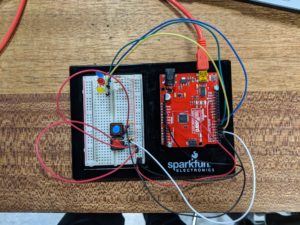The police are coming!! But don’t fear they shall calm down with the push of a button.

Chris Crawford’s paper on defining interactivity aligns closely with my own understanding of design within this class. As I conceptualized and experimented with my code, I began to consider the contextual interaction or use of what I am creating. Crawford establishes a useful distinction in interaction, that passive or “non-conversational” designs cannot be classified in the same light as those that are a product of a conversation between a product and user. I do think that this allows us, as a society, to distinguish overused ideas of interaction from those that are truly interactive. I do, however, believe it is important to acknowledge that our conception of interaction and interactivity has come from complex and specific forms of human and technological development. Fridges, and their lights, upon their inception, would be revolutionary forms of interaction.
In today’s world, where interaction becomes more complex, and human behaviour becomes more closely intertwined with technology, the type of interaction we desire becomes that of the conversation. Fridge lights have become quite ubiquitous, and so have books, but our value of interactivity should not be hierarchical, rather an acknowledgement of the range of interaction. Much of Crawford’s argument lies in a conversation that exists within programming and processing. This is the context of our class and interactive media is useful, however, should not overshadow existing technology like doors, or create normative ideas about making all technology the same. What would doors or fridge lights look like if there were regular conversations between them and users? How much would that cost? Is that worth it?
I believe that we should let non-conversational interactions exist in our paradigm, and undergo a process of determining what type of interaction we desire from products.
